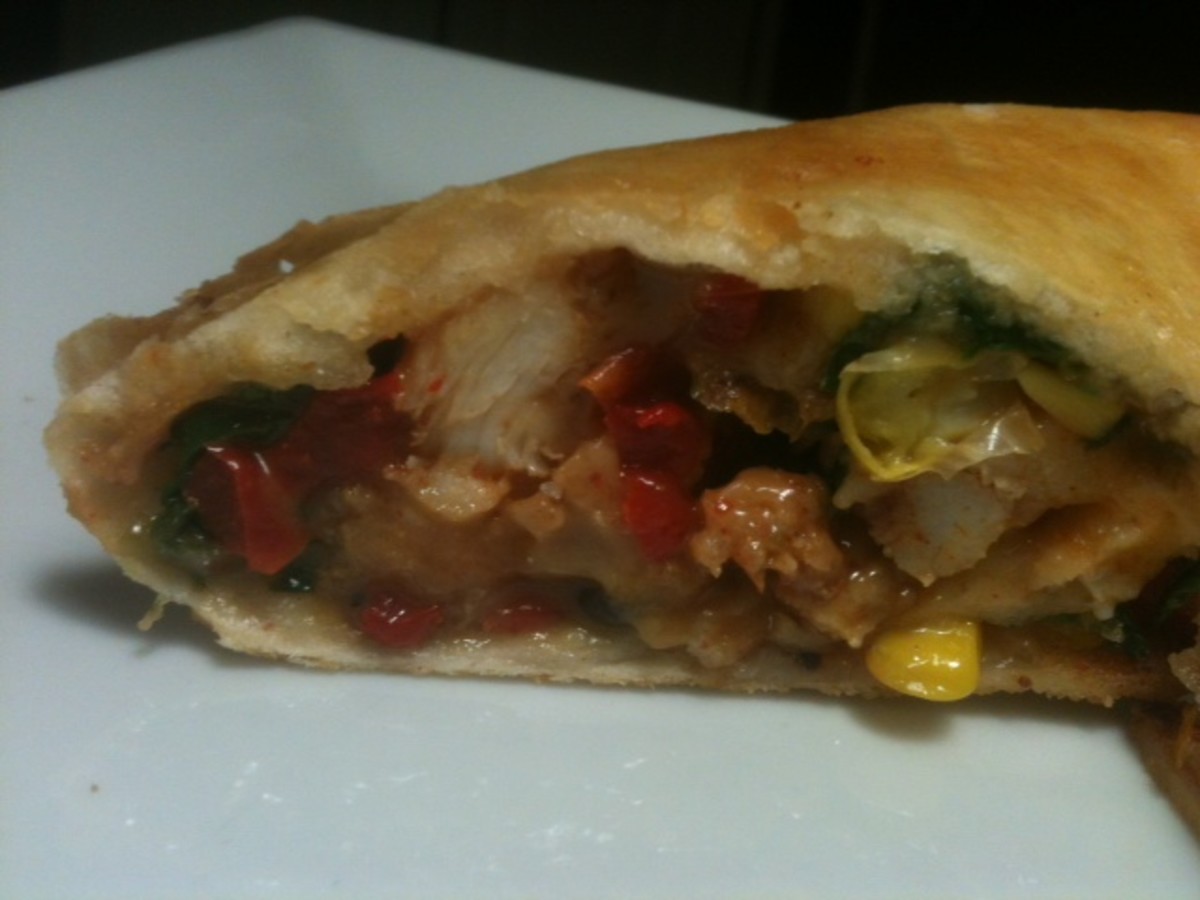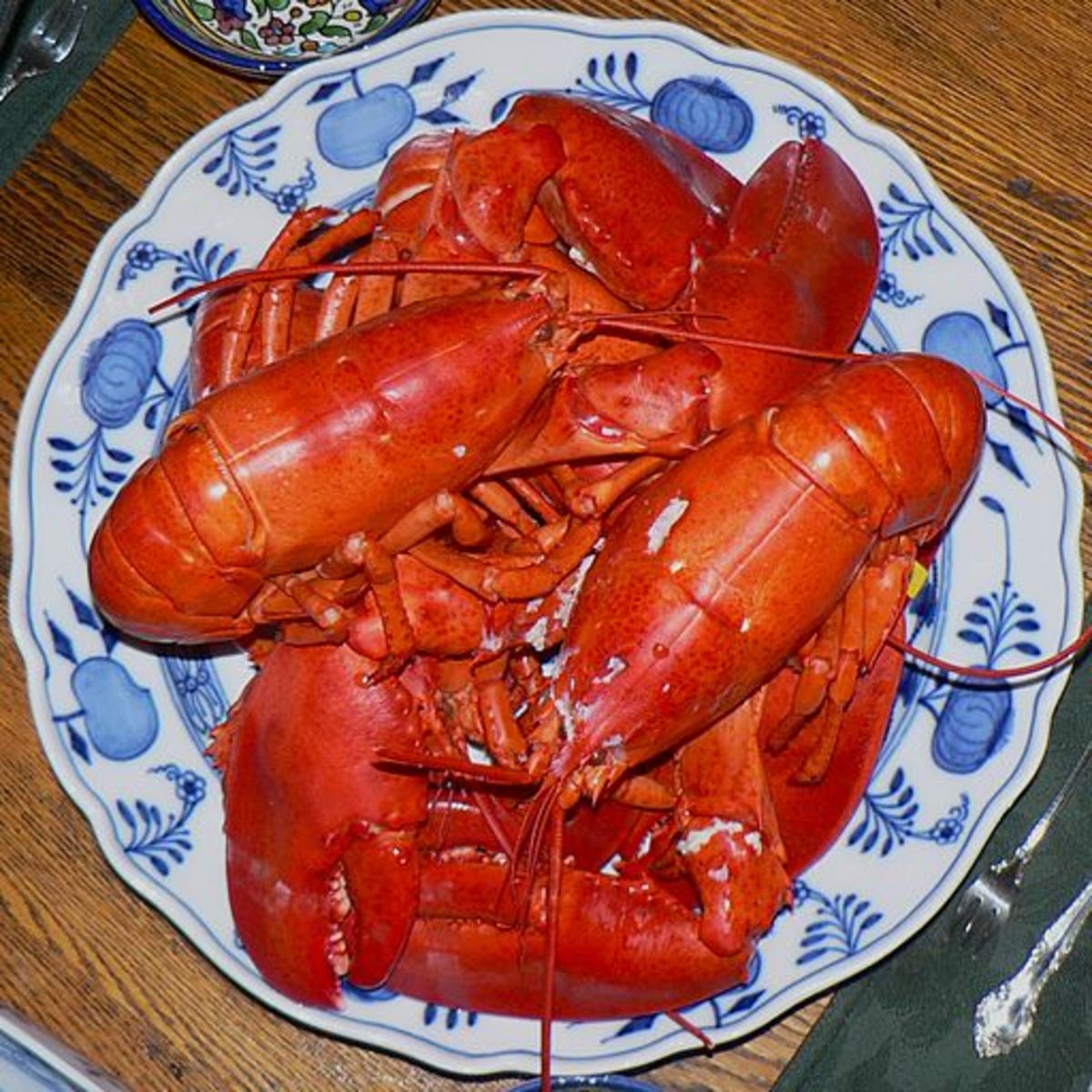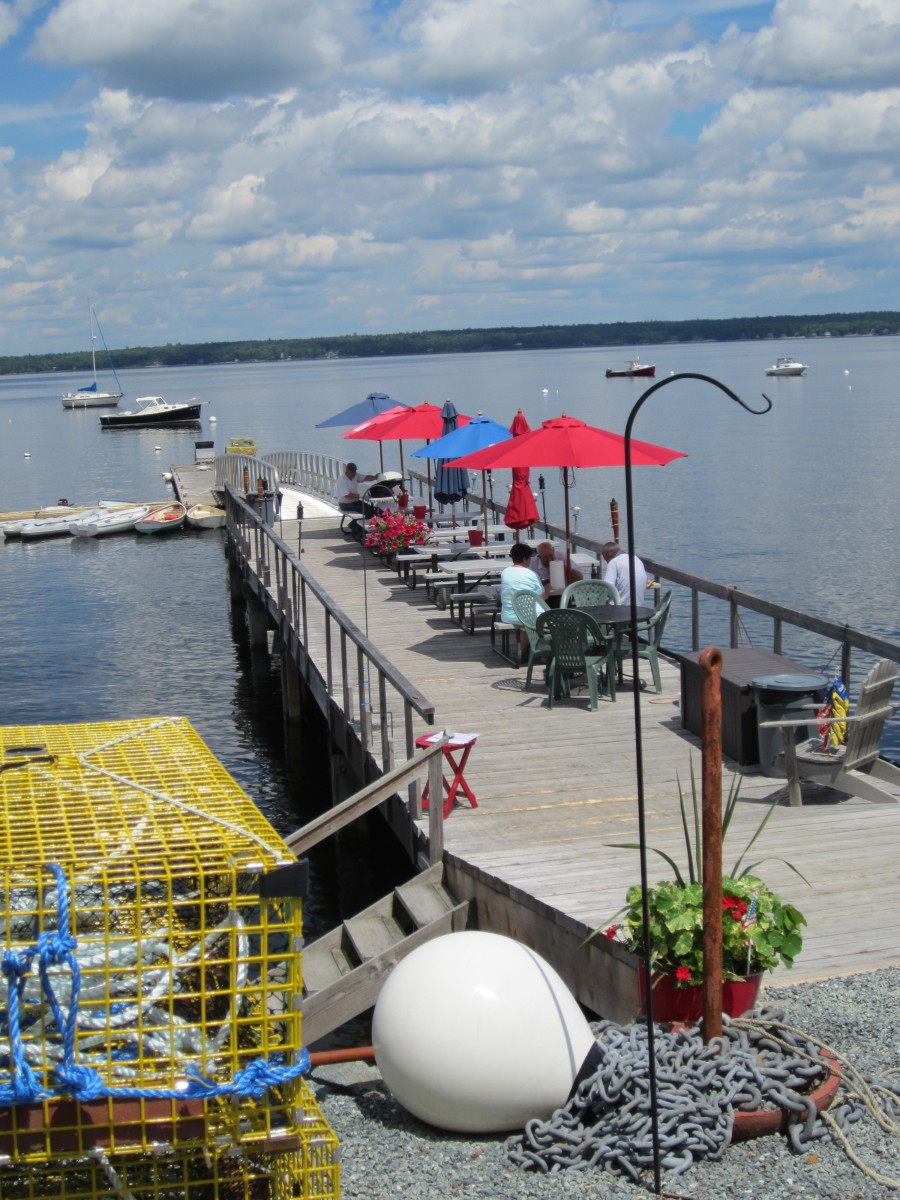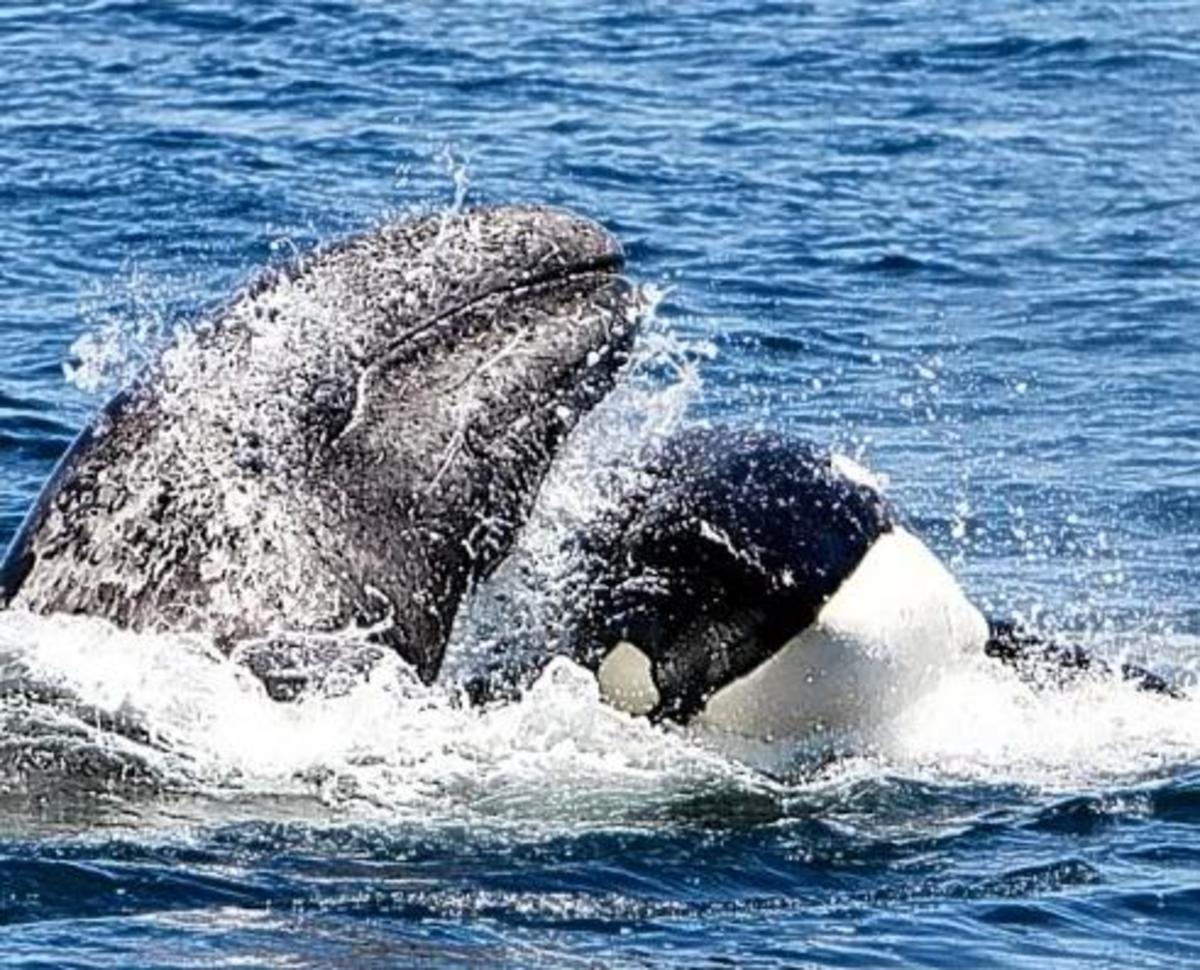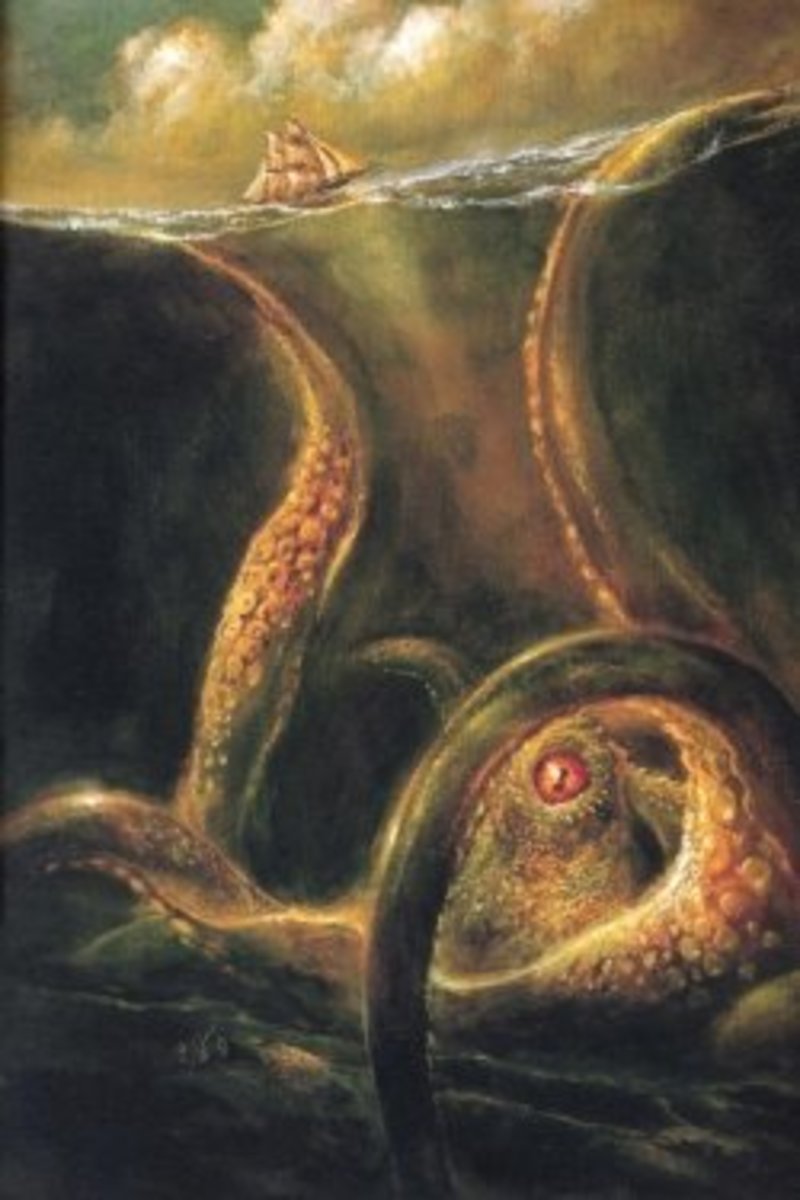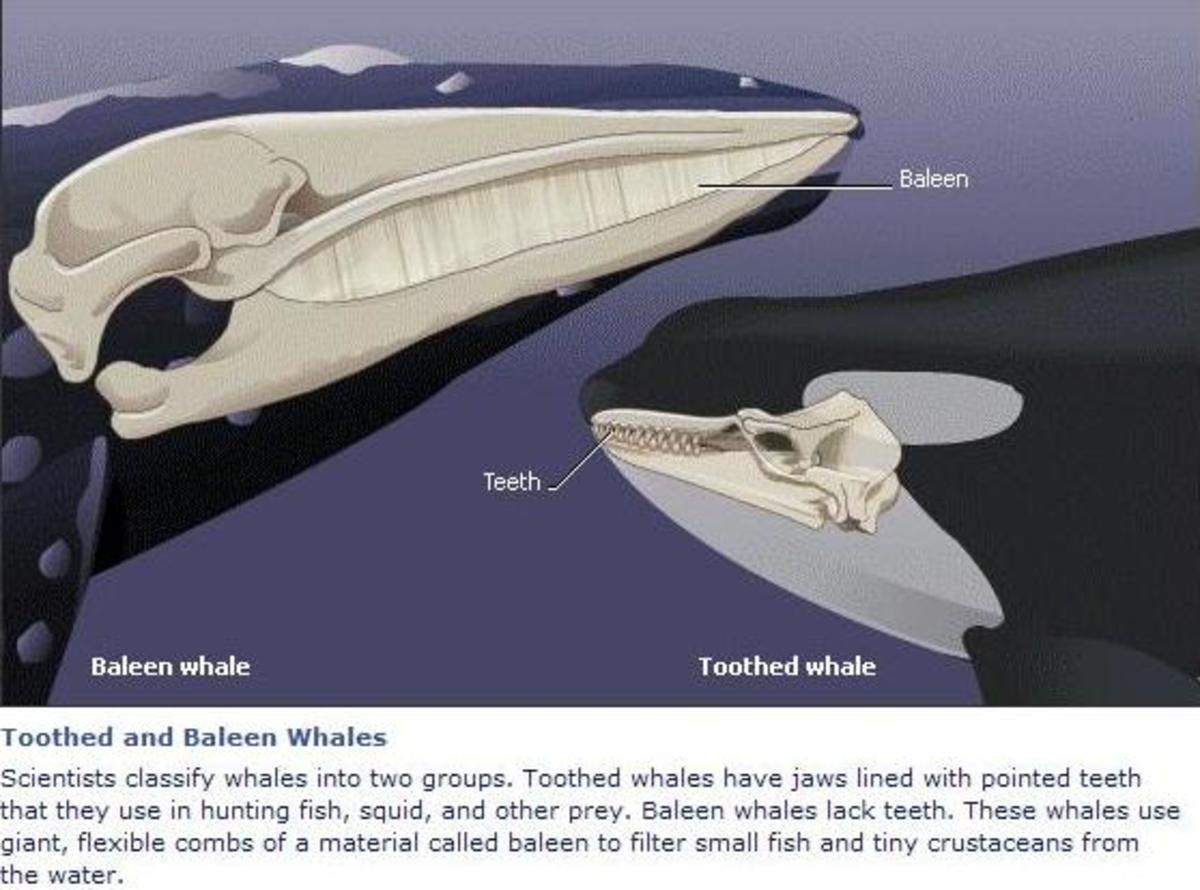- HubPages»
- Education and Science»
- Life Sciences»
- Marine Biology»
- Marine Life
All About Lobster
Blue Lobster
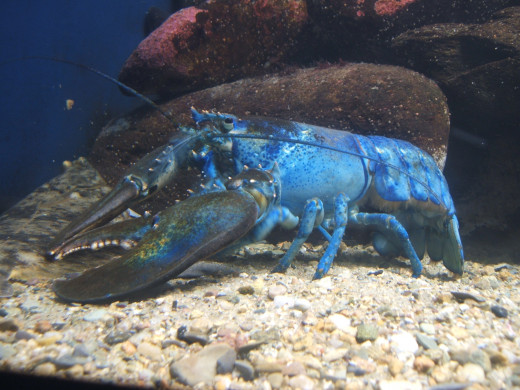
Lobsters In Many Colors
It is becoming more and more common to see lobsters in a variety of colors besides the normal orange-red color we are all used to. Lobsters are usually green-brown or dark green in color in water, before they are cooked. Lobster fisherman are seeing lobsters in a variety of colors including, blue, white, yellow, orange-black calico, bright orange, and there are no reasons as to why.
It is believed that colors are caused by random genetic mutations. What has caught the eye of everyone is the increase in frequency in seeing lobsters in a multitude of colors. Bright orange colored lobsters were statistically estimated to occur one in a million. It seems there are more and more colorful crustaceans. In a recent batch of about 75 to 100 lobsters that were sent to a restaurant in Maine, there were 6 orange lobsters.
Researchers are trying to figure out if this is something unusual, or they have underestimated the frequency of these colors. It needs to be considered that lobstermen are catching four times the amount of lobsters they have caught since 20 years ago. It may be that the increase in catches is just yielding more colorful lobsters, or there may be more colorful lobsters in the ocean, than was previously estimated.
When the weather is warm, lobsters shed their shells earlier than normal.
Lobsters Can Be Over Three Feet Long
Lobsters are crustaceans. They are an invertebrae and have 10 legs. They are in the same family as shrimps and crabs. Lobsters are omnivores, and can live as long as 50 years. Some lobsters can be over 3 feet long, The biggest lobster caught on record, in 1977, was over 44 pounds, was about 31/2 feet long and it is believed could have been at minimum, 100 years old. It was caught near the coast of Nova Scotia in Canada. Lobsters never stop growing, but they do molt less often, the older they get.
The business of catching lobsers is a multi billion dollar industry. Approximately 200,000 tons of lobsters are caught each year around the world.
There are many species of lobsters, but the common ones that are eaten are the European and American clawed lobsters, known as Homarus Gammarus and Homarus Americanus. These lobsters live in th cold waters of the Atlantic Ocean.
Lobsters Have a Strong Sense of Taste and Smell
There are tropical lobsters that are also eaten. They are called spiny and slipper lobsters that are clawless. Lobsters, like other crustaceans, are known as bottom dwellers found in all four oceans, seas, some freshwater, and even brackish lakes. They feed mostly on mollusks and fish, algae, and other plants. They may even eat other lobsters. Lobsters do not see well, but have a strong sense of taste and smell.
Lobsters never stop growing. Females hatch their eggs primarily in the spring and early summer.Lobsters, like many creatures in nature are suffering from the effects of pollution, overfishing, and causing more illnesses, even though lobsters are fairly disease resistant.
Many lobsters live off the coast of Maine. The waters in this most northeastern state are cold, and clean, where the bottom of the ocean is rocky, making it an ideal living environment for these clawed creatures of the sea. In 2011, over 100 million pounds of Maine lobsters were caught. There are over 4,500 lobster fishermen in Maine alone. Maine lobsters are caught all year round. Most lobsters are caught in the last half of the year, which is he time of year when lobsters are more active. Maine is the biggest lobster producing state in the U.S.
The history of lobsters. Native Americans, long ago used lobsters to fertilize their crops and as fishing bait, because lobsters were so pleniful. Lobster was considered a poor man’s food during colonial times. Children, indentured servants, and prisoners were fed lobster so often that some indentured servants in Massachusetts, revolted and had it written into their contracts that they would not be made to eat lobster more often than 3 times a week. As transportation grew during the 1800’s and 1900’s lobsters were brought to areas where lobsters were rarer. And as the demand went up so did the price and they became a delicacy.
Up until the early 19th century, lobsters were caught by hand along the shore. Traps started to be used in the mid 19th century. The lobstermen used boats to transport their catch of lobsters in small boats called smacks. There were tanks on the inside of the boats that holes drilled into it so seawater could circulate and they could travel with the live live lobsters over long distances. These lobster fishermen became known as smackmen in the 1820’s when they first appeared in Maine. Around this time, the demand for lobster started to increase from the Boston and New York areas. By the 1830’s land harvesters replaced smackmen and sold lobster right from the dock to people who came by and to regional suppliers.
Maine Produces the Largest Amount of Lobsters
The demand for lobsters continued to grow and in 1836, canned lobsters became popular so that lobsters could be shipped around the globe. In 1880, a company called Burnham & Morrill Co. became one of the first lobster canneries in Maine. This company is now known as B&M and they are famous for their canned baked beans.
Around 1850, catching lobsters by traps started to become more popular. In 1875 the first lobster pound was established in a tidal creek in Vinalhaven. Lobster pounds keep lobsters in tanks with water that circulates in the same way smack boats work. Today lobster pounds are commonly found on docks that are floating in harbors. Lobster pounds give the lobstermen some control over their catch. They can let smaller lobsters who have just gotten a new shell time to grow and let the shell get harder. They can also wait for the price of lobsters to go up before they sell them.
At the time of World War II, lobster was known as a delicacy, and because of the war time economy, people were able to afford to eat lobster. Between 1950 and 1969, lobster consumption increased and profits increased for lobstermen, so more people joined the lobster industry. Many GI’s started their own businesses in the lobster industry with the money from the GI Bill.
Today, thanks to advancements in transportation, the entire world can have a fresh lobster shipped to them.
The American lobster can be found from Canada to North Carolina, but is most abundant in the waters off of Maine. Maine produces the largest amount of lobsters in the United States.
Even though lobsters have been seen in a variety of colors, when they are cooked, they always turn bright red, except for albino, white lobsters. When cooked, the protein molecules in the shell change and bend and only the red color is reflected from the wavelenths in light. Since albino lobsters lack color, they can’t turn red.
Lobsters continue growing and as they get bigger, they shed their old shells for new ones each year. When they shed their old shell, known as molting, they get a new soft shell that is very delicate. This allows the lobster to grow bigger within their shell. Gradually, their new shell hardens, but if they are caught, they are known as soft shell lobsters.
Soft shell lobsters are very sweet,tender, and delicious. About 90% of the lobsters caught in the summer have a soft shell. They cost less than hard shell lobsters because they have less meat than hard shell lobsters that are the same size.
A Lobster is Not Able to Find Food if their Antennae are Removed
The federal government and all the states in the U.S. are federally regulated that the legal minimum size for a lobster to be caught is 3 ¼ inches in length from the eyes to the tail. This size lobster usually weighs about 1 ¼ pounds. In 1988, the size use to be smaller, but scientists convinced the lobster industry that if they were caught smaller, they were younger lobsters and did not have the chance to reproduce, and eventually there would be a severe shortage of lobsters. They would have preferred the minimum size to be 3 5/16 in length because at that size, nearly 50% of the females would have had the opportunity to reproduce. The lobstermen resisted and 3 ¼ inches length beame the legal size. In Canada, the minimum length of 3 3/16, is even smaller. These lobsters are not allowed to even be imported into the U.S. Maine has a minimum length of 5 inches so that the population of lobsters remains high.
Lobsters have an excellent sense of smell, which they use to find their prey. Clams are common food for lobsters. They will break open the clam shell with their claws. They are clumsy eaters and leave a lot of debris as they use their mouth parts and their first 2 legs to get the food into their mouths. The lobster has 3 stomachs, which all assist in digestiion. The first stomach has a set of teeth that grind and pulverize the food. The second stomach has a digestive gland and helps the food get absorbed into their body. This area contains the green stuff you see when you are eating the lobster. The third stomach takes the waste out of their body.
Lobsters are most noticeable for their their powerful and oversized claws. One claw is a crusher claw that pulverizes its food. The other is a ripping claw for tearing at its prey. A lobster who has a crusher claw on their right side is considered a right handed lobster.
The lobster uses their claws for holding and ripping their food. The lobster also has 8 legs for walking and 2 front legs for a total of 10 legs. The lobster usually uses crawls forward using its legs, but if it is trying to get away quickly, they can use their tail to move backwards. When lobsters get scared they will throw their claw or a leg. They can regenerate these limbsn. Lobsters have an exoskeleton, which means their skeleton is on the outside of their body. The lobster is considered a crustacean like shrimp, crabs, and barnacles. Crustaceans are part of the larger group known as anthropods, which is the same group as spiders,horshoe crabs, and insects.
Lobsters eyes have 10,000 facets that each work like many eyes. Their eyes can detect motion when things are dim, and is probably blinded by bright light. Lobsters do not rely on their sense of sight much at all. They manipulate around their environment through taste, smell, and touch. They have antennae on their head and tiny hairs that cover their whole body, which make them very sensitive to touch. On their legs, there are tiny hairs that are similar to taste buds. If the lobster likes what they pick up, they will then eat it. Their antennae help them pick up odors from further away. They are known as chemorecptors and help the lobster find food to eat, a mate and enemies.
The hairs on the antennae have over 400 different types of receptors that are sensitive enough to tell the difference between different types of food and different prey. A lobster is not able to find food if the antennae are removed. If a lobster senses a predator, they will either hide or become aggressive with their claws.
All About Lobsters
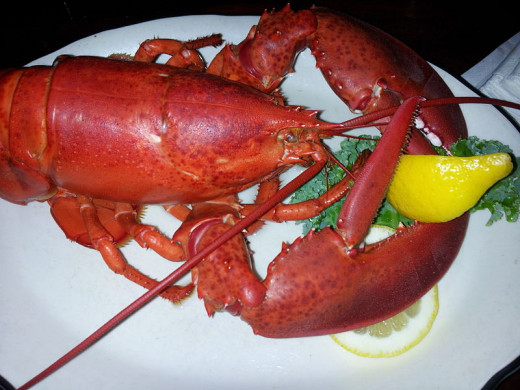
The Lobster March
There are about 100 different types of lobsters around the globe. The American lobster is very similar to the European lobster. Germany, Sweden, Norway, and Denmark call the lobster a hummer. France calls it homard. In waters to the south, a clawless, spiny lobster, and is related to the American lobster. This species does not have large front claws.
Spiny lobsters appear more sociable. Fishermen have seen hundreds and even thousands of these lobsters migrate, especially after a storm, to an area to breed, for more food, or towards warmer weather. It is known as the “lobster march”. They march single file from offshore into the ocean, usually as the autumn storms bring cooler.
Although only clawless lobsters have been seen or filmed doing this march, it is believed lobsters with claws do something similar based on recapture and tagging research. Over many years, scientists have marked the adult lobsters and when fishermen catch these tagged lobsters, they are able to see where they were released and where they are found, and approximate the straight line they traveled. The disance traveled can be very close to 180 miles away.
Humans have a similar march, where you will see many people standing in line to get into a good seafood place to dine on lobster.




